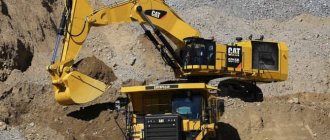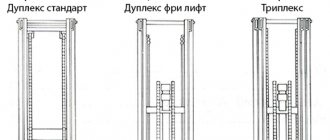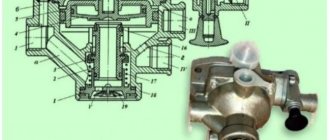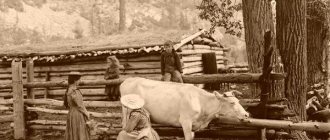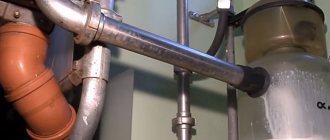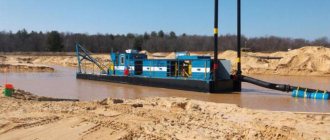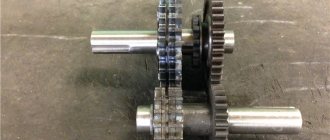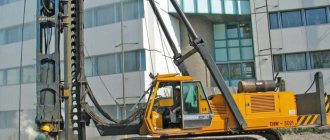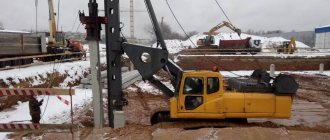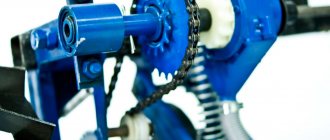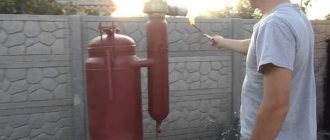This article will teach you how to change the belt on your snow blower. We will talk about self-propelled gasoline models of this equipment.
Self-propelled gasoline snow blowers have two drive belts—one for the auger and one for the wheels. If the snow blower's wheels or augers do not rotate when you press a certain lever, then, as a rule, this means that the corresponding belt has broken. Both belts are located in the same place, so replacing them requires almost the same steps. It is advisable to carry out the replacement together, although with a little practice you can do it alone.
Over 80 types of snow blowers from different manufacturers in one place. Click to view
Before starting work, it is advisable to loosen the corresponding cable - driving the auger or wheels - depending on which belt you are changing.
After this, unscrew and remove the cover that hides the belts. It is located directly in front of the engine.
Snow blower with cover removed
Next, you will have to unscrew the nuts that hold the snow intake and the wheel drive unit together. Usually there are six. After unscrewing, separate the snow intake and the block. The auger drive cable will somewhat interfere with the disconnection. It can be removed when the snow intake and wheel block are already separated by a few centimeters. But you can change the belts without disconnecting it, it will just be somewhat inconvenient.
Snow blower with separated snow intake and wheel drive unit
Next, the belts will be in front of your eyes. We remove the torn belt and install a new one. Reassemble in reverse order.
That's all. We hope that after reading the article it will not be difficult for you to change the belt on your snow blower yourself.
The role of belts in the design of a snow blower
Drive parts are among the consumable parts of snow blowers that most often require timely replacement. Moreover, each snow blower is initially equipped with two belts, which guarantee proper operation of the machine in all weather conditions.
The function of the first type of drive elements is to transmit traction force from the motor to the factory auger of the snow blower. Parts of the second type play a similar role, but in their case, the traction force from the internal combustion engine is transferred to the wheel drive of the utility vehicle.
Spare parts of the first and second types are subject to constant intense wear, due to which they often fail. The standard controls of the snowplow will indicate their deformation or breakage. If the snow blower does not move when you press the gas lever, it means that the drive element connecting the engine and wheels has failed. Similarly, a snow blower owner can determine if the auger drive belt is faulty. If the snow blower mechanism does not rotate when you press the appropriate lever, then the drive part will need to be replaced.
What to choose for replacement
You can select spare parts based on the manufacturer's recommendations. Just look at the technical data sheet or instruction manual. They also often select analogues from trusted manufacturers.
Some of the brands under which good belts for driving wheels and augers on snow removal equipment are sold include:
- Patriot;
- Enifield;
- Al-Ko;
- ContiTech AG;
- Ariens;
- Rotary;
- Hyundai;
- MTD.
These are the main brands that are found on the Russian market and also deserve attention.
It’s not worth buying frankly cheap Chinese consumables. But at the same time, it is also impossible to put a taboo on belts from China, since the bulk of spare parts are produced there.
Consequences of incorrect adjustment
Each manufacturer of snow removal equipment advises paying special attention to adjusting the tension of installed parts. There are several reasons for this, since an incorrectly installed drive element can cause the following malfunctions:
- overheating of the engine - if the spare part is not tensioned enough, then the standard internal combustion engine of the snow blower will have to rotate at a higher speed. This will certainly lead to its rapid overheating. In addition, the car’s engine will consume 1.5 times more fuel than usual;
- reduction in the working life of the carburetor - if the element is insufficiently tensioned, the engine will require more fuel, which will lead to more intense operation of the carburetor. The first to fail is the diffuser, which injects fuel into the cylinder. After it, the air supply channel and the damper that regulates the speed of fuel circulation will gradually become unusable;
- failure of the driven shaft of the travel elements - if the spare part is tensioned too tightly, the snow blower will move only in jerks. This will lead to slipping, which will result in increased heating and wear of the driven shaft;
- overheating of the auger - if the belt is overtightened, the driven shaft of the auger will spin at increased speeds. This will lead to its rapid overheating even if the snow blower has a sufficient amount of lubricant. It’s even worse if, while the auger is rotating at high speeds, glass or stone gets inside it. This can result not only in broken blades, but also in injury to the operator.
Advantages and disadvantages
Most users note that the Huter sgc 4000 features true German quality at a fairly reasonable price.
Expressing their worldview about the operation of the equipment, buyers name a huge number of advantages:
- The snow blower is reliable and removes snow perfectly even in frosty weather.
- The operation of the motor is supported by a mechanical cooling mechanism.
- Thanks to the large neck of the gasoline tank, refueling the engine is simple and comfortable.
- The device is quite compact and lightweight, which makes it portable. It can be lowered into the car and transported to the desired location, for example, to a summer cottage.
- Thanks to its small size and wheel locking system, the snow blower is maneuverable and perfectly clears snow even in small areas.
- Reliable wheel treads provide good cross-country ability. The possibility of slipping is eliminated even during icy conditions.
- Restrictive boots protect the receiving chute from damage and help regulate the distance from the surface to the bottom edge of the auger. This feature allows you to use the snow blower on different surfaces.
The equipment has even fewer shortcomings, but they still exist. Buyers note that the snow blower does not remove wet snow well enough.
Classification of belts in snow blowers
For the most part, snow blowers from well-known brands are equipped with predominantly gear-type elements. In addition to low weight, their main feature is high strength. In this parameter, they are almost in no way inferior to drive chains. The gear parts are easy to install on the snow blower yourself. For this purpose, they have high elasticity, which allows them to be placed in places with limited space.
All timing belts used by manufacturers for snow blowers are usually subject to the following classification:
- flat-toothed - the high elasticity and resilience of these elements allows manufacturers to use them as drives for screws. Flat-toothed parts differ from market analogues in their increased resistance to deformation, which significantly increases their service life during intensive use. The features of elements of this type include the ability to continuously ensure synchronous interaction of two screws at once. This increases the stability of the work of a commercial snow blower when clearing heavy sticky masses;
- 2-way – the advantage of these drive elements is the ability to stably transmit rotational force from the snow blower’s internal combustion engine in several directions simultaneously. A double-sided belt for a snow blower is most often used to complete the wheel drive of a utility vehicle. Provided that the unit is equipped with a transmission with a reverse function, the 2-sided element will allow it to move not only at any of the forward speeds, but also at reverse speed. Parts of this type are resistant to deformation and shock, therefore, with proper operation of the machine, their service life can reach several years;
- wedge drive parts of this type are distinguished by their trapezoidal profile and factory cross-section.
They are less often used to complete snow blowers. This is due to the fact that the wedge element does not fit tightly enough to the surface of the shaft head, thereby not ensuring stable operation of important components of the economic machine. The drive elements of each of these types differ from each other in their factory cross-section and profile. You need to remember this when choosing a part to replace a faulty standard belt on a commercial snow blower.
Tools
The Huter sgc 4000 is a modern model, self-propelled, with a gasoline engine, and belongs to the semi-professional class. Allows you to clean a large area up to 3000 m2. The mobile, well-controlled snowblower maneuvers accurately in narrow or cluttered areas such as parking lots.
Description of the Huter sgc 4000 snow blower
The model has a built-in standard mechanical wheel locking system, which makes maneuvering in a small area easier. Built-in cotter pins on the wheels allow you to turn very accurately and in a few seconds.
READ Replacing the Belt on a Bosch Rotak Lawn Mower
The presence of a mechanical transmission makes it possible to choose the optimal speed for each specific layer of snow or terrain.
Stability during maneuvers due to the reverse system.
German assembly guarantees a long service life and ensures efficient and effective site cleaning.
The machine is adapted for extreme weather conditions.
A cold start, primer and manual adjustment of engine speed are provided.
The screw is made of heat-treated, mechanically strong steel.
The unloading tray and hopper receiver are made of heavy-duty plastic.
The working shaft is mounted on special double-row bearings, which increases resistance to extreme loads.
Technical characteristics of the Huter sgc 4000 snow blower
The power of the 4-stroke, single-cylinder engine is 5.5 liters. With. ensures process productivity.
Durability and high working life, thanks to high-quality assembly.
Large diameter wheels are installed, which provide good maneuverability on difficult terrain. Self-cleaning protector. Slipping on icy conditions is excluded.
Possibility of adjusting the distance from the ground to the auger. Performed by raising or lowering the shoes.
Snow release is two-stage. screw and fan. By turning the chute 180 degrees, you can adjust the direction of snow throwing.
Multifunctional model. Suitable for cleaning narrow, small, medium and large areas. Used in both household and industrial applications. An excellent model for public utilities.
In one pass, it covers a strip up to 56 cm wide and a layer height from 5 to 42 cm.
Fuel tank volume 3 liters. Enough for 40-90 minutes of continuous work.
Maneuverability is ensured by the number of speeds: 4 forward and 2 rear.
Model range of snow blowers “Lynx”
The main area of use for Lynx snow blowers is domestic use. This means that with any of the models presented below, you can quickly and effectively remove large and small snowdrifts from a small area or local area. Each model differs from the previous one in more advanced technical indicators, power, performance and, of course, cost.
Self-propelled snow blower “Lynx” SM 5.5 A
A small and convenient snow blower “Lynx” with a durable four-stroke Loncin G168F engine with 5.5 horsepower. The control panel allows the operator to switch speeds (5 speeds in the forward direction and 2 speeds in reverse), select the range and direction of the dump of the collected snow.
Self-propelled snow blower “Lynx” SM 5.5 A
The gasoline engine is started by manual start (cable). A metal toothed auger makes it possible to remove not only fresh snow, but also old and icy snow. The snowblower's durable and reliable wheels guarantee easy movement, maneuverability and excellent stability even on slippery surfaces.
Snow blower “Lynx” SM 6.5A
An even more powerful model with a four-stroke G168F engine that produces 6.5 horsepower. The manual transmission allows the owner to change gears between four forward and two reverse. Also, the operator himself sets the snow throw range and its direction.
Snow blower “Lynx” SM 6.5A
The self-propelled snow blower “Lynx” SM 6.5A has a stable wheel drive. The engine starts both manually and thanks to the easy start system provided through an automatic electric starter. The metal auger can easily deal not only with fresh snowdrifts, but also with an icy layer of snow.
Snow blower “Lynx” SM 6.5 V
This model has a four-stroke engine with a power of 6.5 horsepower, but the manufacturers have focused on the balance and maneuverability of the equipment. In this regard, improvements have been made to tubeless pneumatic wheels with an agricultural tread, providing even greater cross-country ability and stability.
Snow blower “Lynx” SM 6.5 V
The built-in bright headlight makes it possible to work in the dark or in poor visibility. The operator independently selects the speed of the Lynx snow blower, as well as the direction and distance of snow ejection.
Snow blower “Lynx” SM 7.0 A
Powerful model with a gasoline engine with a capacity of 7 l.m. will help you quickly get rid of accumulated and icy snow. Thanks to the two-stage toothed, 55 cm wide metal auger, the number of passes is reduced compared to smaller models. Tubeless pneumatic wheels with winter tread provide good stability, maneuverability and maneuverability.
Snow blower “Lynx” SM 7.0 A
Main characteristics: friction transmission, wheel drive, tubeless pneumatic wheels with winter tread. Two-stage gear auger with notches, diameter 30 cm, remote control. Bucket dimensions 56/54 cm. Engine start type – manual, number of gears 5 forward/2 reverse. Fuel tank volume 3.6 l. There is a function for adjusting the direction of ejection.
Self-propelled snow removal machine “Lynx” SM 7.0 B
An even more advanced and improved Lynx snow blower with a four-stroke engine power of 7 horsepower. You can start the engine using either a manual trigger or an automatic electric starter. The wheels are equipped with winter tread, which guarantees excellent grip even on slippery surfaces, maneuverability and good maneuverability.
Self-propelled snow removal machine “Lynx” SM 7.0 B
The snow removal tool is controlled on the control panel, where the operator independently sets the speed of the Lynx snow blower, the direction and range of the snow dump up to 10 meters. The small size of the equipment together with a comfortable weight (72 kg) guarantees ease of use, and high power guarantees speed and quality of cleaning.
Gardening equipment - technical specifications, user manuals
Gasoline snow blower huter sgc 4100 - instructions, specifications
The German brand HUTER has been represented on the Russian market since the early 2000s and during this time has earned recognition from consumers throughout the country. The production of garden equipment is one of the main areas of HUTER; the company is considered a leader in this market. All products under the HUTER brand meet the requirements of Russian and international standards.
Manufacturer (importer): Hüther Technik GmbH Potsdamerstrasse 92, 10785 Berlin, Germany. Made in China.
The Huter SGC 4100L petrol snow blower is designed for clearing small areas of snow. Self-propelled, equipped with a 4-stroke engine with a power of 6.5 hp. They provide good cross-country ability and have five forward and two reverse speeds. The processing width in one pass is 56 cm. The metal auger can crush icy, dense or wet snow.
The Huter SGC 4100L snow blower differs from the SGC 4100 model in the presence of a headlight for working in the dark and when there is a lack of light in the morning and evening hours.
1. Engine oil mineral 5w30
2. Lubricant for the gearbox - litol 24 or equivalent
3. Gasoline - AI - 92
4. Belt for auger - A33 (838Li); LB4L885. For models from 2017 A32.5 (825Li); 4LXP855 (information from various sites, not from instructions and details)
Gasoline snow blower huter sgc 4100 - operating instructions: download.
The instructions differ in that different engine power is indicated: one is 5.5 hp, the other is 6.5 hp. - either inaccuracies, or at some point they began to install a different engine.
Gasoline snow blower huter sgc 4100 - video review
Specifications
| Model | huter sgc 4100 | huter sgc 4100L |
| Brand | Huter | |
| Brand country | Germany | |
| Country of Origin | China | |
| engine's type | Petrol | |
| Power, hp | 6.5 | |
| Engine | 4-stroke, single cylinder | |
| Power, W | 4100 | |
| Petrol | AI -92 | |
| Engine oil | mineral oil 5w30 | |
| Gearbox lubrication | Litol 24 or equivalent | |
| Starter type | Manual | |
| Fuel tank volume, l | 3.6 | |
| Working width, mm | 560 | |
| Grip height, mm | 540 | |
| Release range, m | 15 | |
| Heating | No | |
| Self-propelled gun | Yes | |
| Availability of headlights | No | Yes |
| Type of fuel | Gasoline AI-92 | |
| Number of speeds | Speeds: 5 forward / 2 reverse | |
| Package weight | 71 kg. | 72 kg. |
| Warranty, months | 12 | |
| Dimensions, cm | 66 x 62 x 89 | |
| Heated grips | No | |
| Tire pressure | 1.6-1.8 bar. | |
How to replace the belt on a snow blower?
Since drive parts are consumable spare parts, each manufacturer of snow removal equipment provides the possibility of replacing them independently in the event of a malfunction.
To replace worn elements, the operator needs to proceed in the following order:
- First, the owner of the unit must loosen the factory cables that were originally connected to the augers and wheel drive of the machine;
- Next, you need to remove the plastic cover, designed to constantly protect the belts from dirt and snow;
- In addition to the drive elements, there are standard nuts under the cover. They fix the belt itself, connecting the auger and the wheel drive of the unit;
- At the next stage, you will need to carefully remove the belt, wipe the space under it and install a new part;
- After this, the operator will need to test the operation of the new element. If, while the engine is warming up, no rustling sounds are heard from the compartment where the belt is located, it means that the drive element was replaced successfully.
When installing a new belt, its correct location in relation to other parts is important. During its movement along the shaft head, the part should not touch other components, especially quickly heating mechanisms. Otherwise, the new belt will quickly break.
A few more subtleties on operating the cultivator
Once, while working with a cultivator, I noticed that it was somehow being pulled to the side, and I had to make an effort to level it and keep the given course. I didn’t immediately understand what was going on, but it turned out to be very simple and ridiculous.
The fact is that the cutter can be attached to the shaft with either side, this is how the fastening works, but either side is not correct! The cutter should cut into the ground with a sharp, cutting edge, and this is understandable, but due to carelessness, the cutter on one side of the cultivator was turned over and it entered the ground with its blunt edge.
Be careful when installing the cutter.
As a result, the correctly installed cutter hit the ground well, but the other side “rested.” So the motor-cultivator was dragged to the side!
Pay attention to the direction of the fastening bracket
The cutter is attached to the cultivator shaft using a “finger” with a fixing bracket, so you also need to keep an eye on it. When installing the pin, the bracket should not “unfasten” when it meets the ground.
Place the fastening pin correctly.
Here is an example of how the finger brace is deployed incorrectly.
Example of incorrect installation
Adjusting the Belts on a Snow Blower
In order to prevent the drive element from prematurely falling off the rotating shaft head, the operator must correctly adjust the installed part. Adjusting the tension of the part should be done during its immediate installation, however, often owners of snow blowers are faced with the need to tension the element directly while operating the snow blower on the site.
To adjust the tension of a part, you must:
- Remove the plastic cover that covers the compartment with the straps from snow and dirt;
- Alternately turn the screws responsible for the position of the shaft clockwise;
- As soon as the shafts approach each other, the drive element must be put on them;
- After this, by unscrewing the screws counterclockwise, you need to move the shaft so that the belt does not sag and bends only when you press it with your finger.
Finally, the operator must check the operation of the adjusted belt. If after installation it does not move to the sides of the shaft head, it means that its tension has been adjusted successfully.
What belt problems do snow blower owners encounter?
During operation, the drive elements of snow removal equipment are in constant motion and interact with other components of the unit. Because of this, they fail quite quickly. The list of typical faults with snow blower belts includes:
- overheating and deformation - this occurs when operating a snow blower without cooling breaks. Due to intensive use, all important components of the machine heat up, including the drive part. It is made of soft elastic material that cannot withstand prolonged exposure to high temperatures. As a result, the drive element is deformed. To prevent this, you need to give the unit some time to cool down. It is best to leave the car with the engine turned off for 10 minutes after every hour of use;
- stretching - this problem is faced by those owners of snow blowers who, when using the unit, too often manipulate the gas and auger drive levers. Each time you press the lever, the corresponding part is tensioned, which, over time, leads to a change in its original factory length. To solve this problem in the future, you need to press the gas and auger drive levers only when necessary;
- drying out - this malfunction causes insufficient lubrication of the drive parts. Because of this, the constantly heating elements of the snow blower lose their elasticity and quickly dry out;
- break - the cause of this malfunction is the banal wear of the part, or its constant contact with the hot components of the snow blower. If during operation the snow blower constantly touches the heated mechanisms of the machine, then over time it breaks off. To prevent this, the operator must constantly monitor the location of the part in relation to other components of the unit.
Another common malfunction of the drive parts of a snow blower is associated with their blocking when passing the next turn on the shaft head. The cause of this problem is the accumulation of moisture, dust and oil, which prevents the normal movement of the part. Regular cleaning of the belt compartment from snow and dust will help solve this problem.
The main reasons for rapid wear of belts
A snow blower belt is a consumable item that sooner or later fails and requires complete replacement. But there are several operational features that can extend its service life:
- Frequently check the presence of lubricants, as well as regular maintenance of snow removal equipment.
- Avoiding overheating and working for too long. An increase in the temperature of all parts has a very negative effect on the belt and the entire mechanism as a whole.
- Constant breaks from work. Belts and the engine work perfectly with a smooth increase or decrease in speed, frequent and sharp “throws” of the starter have a detrimental effect on mechanisms and parts.
